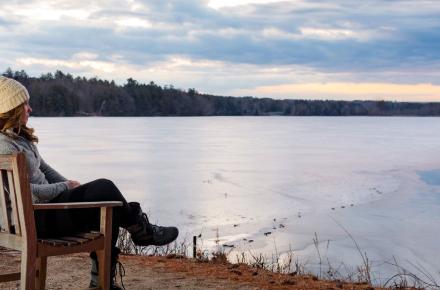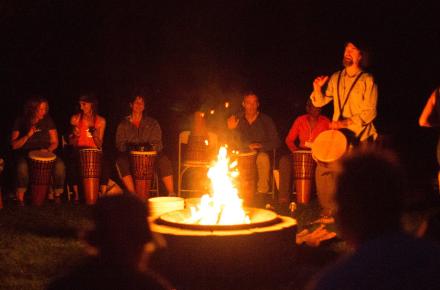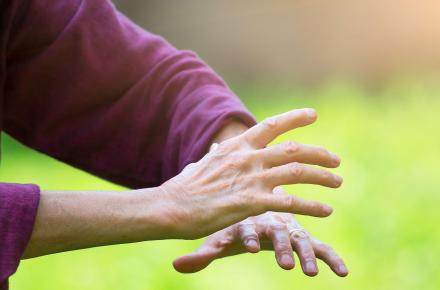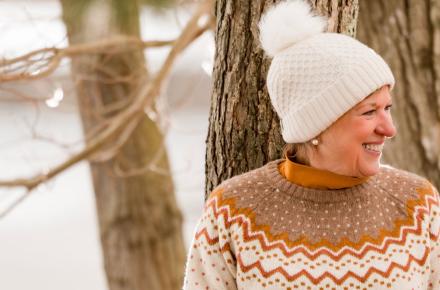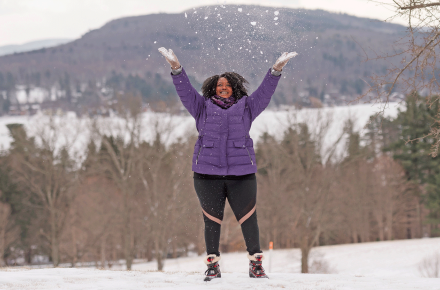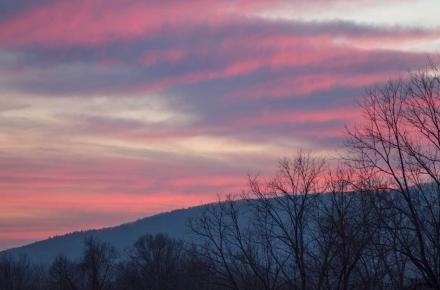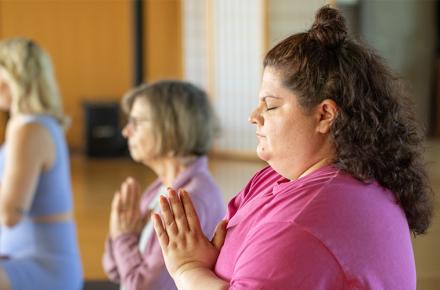Yoga Outside the Comfort Zone: Confronting Your Edge with Courage
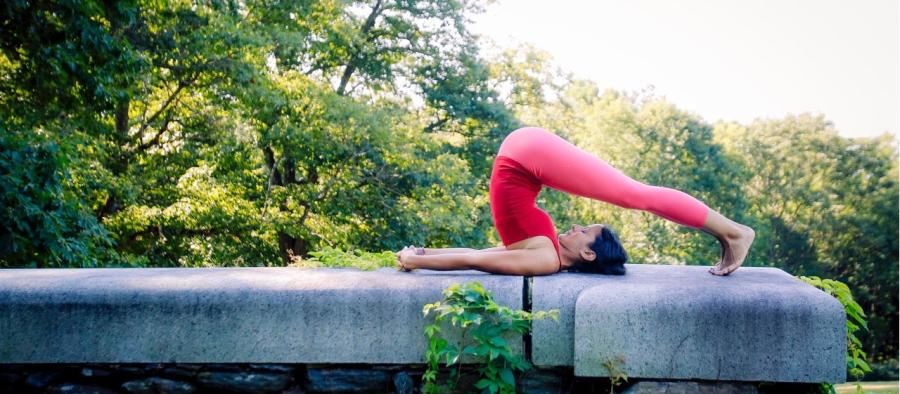
"The yoga pose you avoid the most you need the most."
—Author unknown
Even the most Zen-like yoga instructor isn’t immune to intimidating moments on their mat. A strong practice isn’t necessarily based on being able to execute all types of yoga postures with a devil-may-care attitude. Rather, some of the richness of on-the-mat practice comes from acknowledging that certain poses can be scary—fears that may be triggered by things such as past injuries, perceived limitations, and general inexperience with the pose at hand. These fears can be gifts, though, especially when confronted honestly, courageously, and in the spirit of self-inquiry. We asked a few Kripalu faculty members which yoga poses test their edge and how they cultivate equanimity in the face of discomfort, without pushing themselves too far.
“Right now, the pose that scares me the most is Savasana, Corpse pose. Be still, relax, let go … It all sounds so nice, so simple. The truth is that, for me, slowing down and fully surrendering is not always easy. I am much better at going, doing, accomplishing. Savasana invites me to stay open to the unknown, to be with all of me, exactly the way I am, without disconnecting, running away, or numbing out. Sometimes this process can be challenging, even painful.
“I confront this fear by practicing Savasana every day. I remind myself that what matters is the willingness to choose connection, to stay awake in my heart and mind. I get curious about myself, asking, ‘What am I running from? What am I unwilling to feel?’ I soften into the experience as much as possible, embracing myself with tenderness and acceptance.”
—Jess Frey, Kripalu School of Yoga faculty
“One pose that I find a little scary is Halasana, Plough. I have been working with Plough on and off for 20 years now, but I still find this posture intimidating. Something about having my chin tucked to my sternum, with the weight of my lower body pressing down, triggers a body memory I have of once being tackled and rolling backward over a rock. That was a frightening experience, and I thought as it was happening that I might break my neck. I didn’t, but practicing Plough sometimes brings up that memory and the fear associated with it.
“If I can be gentle with myself, adjust the pose accordingly, and modify as needed, my exploration of Plough moves beyond that initial fear response and into a place of great freedom and inner expansiveness.”
—Micah Mortali, Director of Outdoor Education and Programming
“Many yoga poses scare me! My 65-year-old body has a way of speaking loud and clear, sometimes in a very scary voice, when I attempt a posture that doesn’t feel right.
“Mostly, I avoid any postures that scare me, and default to those that feel good and safe in my body. Adapting poses is a skill that I’ve acquired over the years and rely on. At this stage of my practice, my ego has diminished somewhat, and the reality of what my body really wants and needs is more pressing than confronting my fears—been there, done that.”
—Vandita Kate Marchesiello, Kripalu R&R faculty
“The pose that scares me most has always been Hanumanasana, the splits. I have this fear that I'm going to pull a muscle every time I come into it. Whenever I practice Hanumanasana, I always do so with two blocks underneath each thigh, and softly ease into the pose by adjusting the height of the blocks as needed to help me go a little deeper, if I get brave enough.
“I do wonder why it makes me so uneasy to practice the splits, but then I think about what Hanuman represents. He is a symbol for accomplishing the impossible through devotion. Whenever I remember that, it inspires me to practice this pose more often.”
—Susannah Beattie, Kripalu R&R faculty
“Handstand has always been a pose I am fearful of. Due to hypermobile shoulders and a history of injury, I am always apprehensive to attempt this inversion. Many, many times I have challenged myself to a year of Handstand prep and practice, and many, many times I have backed away in fear.
“What has truly fueled my ability to play in Handstand is knowing that I don’t have to do it, but that, if I want to try it, I will. That turns Handstand from something daunting, which I have to master in order to be a great yogini, to an exploration imbued with awareness and compassion for myself. I find that very empowering.
“If I feel shaky or nervous when attempting Handstand, I simply go up against a wall or use my steady, tree-like husband for support. Both will never let me fall, and that makes me feel strong, secure, and more daring.”
—Sarajean Rudman, Kripalu School of Yoga faculty
Find out about upcoming Kripalu School of Yoga trainings.
© Kripalu Center for Yoga & Health. All rights reserved. To request permission to reprint, please e-mail editor@kripalu.org.

























